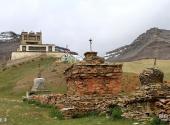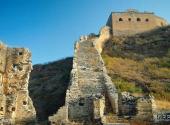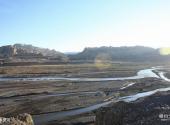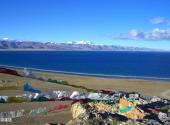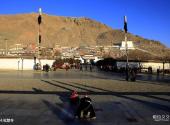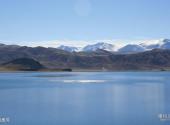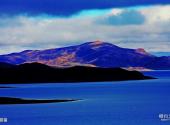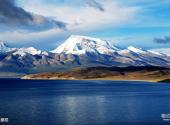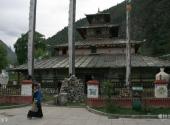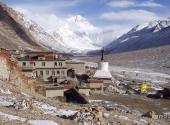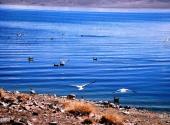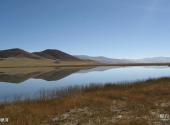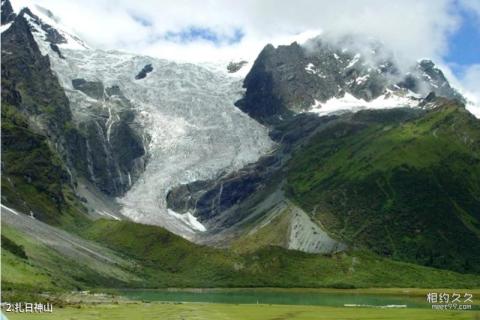
Scenic spot introduction:
Mount Kailash is the main peak of China's Gangdise Mountains and one of the ten most beautiful and stunning mountains in China. The peak is 6,721 meters above sea level and is located in the north of Purang County, Ali Prefecture, Tibet. There are more than 250 glaciers here, which have brought a lot of water. It is the source of the Ganges, Indus and Yarlung Zangbo rivers and the most famous sacred mountain in Tibet. It is shaped like an olive and reaches the sky. The top of the mountain is like a colorful crown, and the body is like an eight-petal lotus. The mountain is made of crystal. To the east is Wanbao Mountain, which is said to be the mountain where Sakyamuni stepped on. To the west is Tara Mountain, to the south is the peak of the goddess of wisdom, and to the north is the mountain of the guardian god. Every year, many believers from the mainland, India and Nepal come to worship and circumambulate the mountain. It is a pilgrimage center for Tibetan Buddhism, Hinduism and primitive Bon religion, and is known as the "King of Sacred Mountains".Attractions distribution:
There are numerous places of interest around Mount Kailash, which is a holy place in the hearts of many religions. There are many temples and pagodas here, mainly Qugu Temple , Zhire Temple , Songchu Temple (also known as Huanbian Temple and Zunzhu Temple), Jiangza Temple and Sailong Temple . Namunani , Lake Manasarovar and Laang Co The area consisting of two mountains and two lakes is called "Holy Mountain and Holy Lake" by Tibetan compatriots. In addition, the four major rivers in Ali area - Maquan River , Shiquan River , Xiangquan River , Peacock River , flowing down from the four directions of Mount Kailash, winding and twisting. The peak is shrouded in white clouds and covered with snow all year round, towering above all other peaks, which is extremely visually and spiritually shocking.Scenic spot features:
Photography, hiking, religious and cultural tours, natural landscape tours, these five temples have many popular legends, and have preserved a wealth of sculptures, statues, murals and other cultural relics. Temples, snow-capped mountains, lakesTravel Notes of Travellers:
- Travel tips: May Day travel recommendations
travelling guideline:
There is no time limit for circumambulating the mountain, but April 15th of each year is the day when the Buddha Shakyamuni was born, attained enlightenment, and passed away.
A Mani flag changing ceremony will be held at the entrance. Tibetan Buddhism believes that the merits of circumambulating the mountain on this day are higher than those on ordinary days, so this day will be particularly lively.
Tour route:
Circumambulate the mountain (takes three days)
Day 1 (20 km, about 7 hours): Tachin (4,560 meters above sea level) heading west → 5 km → entrance (a 20-meter-high prayer flag is erected at the flag-raising field) → 6 km → Qugu Temple (The temple on the hillside across the river is available for accommodation) → 7 km → Second post station (several simple tents) → 2 km → Zhire Temple (4,800 meters above sea level, accommodation)
Day 2 (24 km, about 8 hours): Zhire Temple → 3 km → Burial Ground → 2 km → Zhuoma La Pass Mani Pile (5,700 meters above sea level) → 10 km → Riverside Fourth Post Station → 9 km → Zunzhu Temple (accommodation)
Day 3 (9 km, about 5 hours): Zunzhu Temple → 6 km → Zongdui exit → 3 km → Tachin.
Note: The weather in the mountains is unpredictable and the temperature varies greatly. You should understand the weather conditions before going up the mountain.
Best time to visit:
July → September every year.
Shopping recommendations:
(Local specialties) Tibetan carpets, Tibetan masks, ox bone ornaments, Tibetan knives, thangkas, snow lotus, saffron, Tibetan medicine, and matsutake mushrooms.
(Special food) Jinlan Xiahe tendon, fried lung, sweet tea, Qiangmudu tea, blown liver, Mount Everest holy tea, dustpan cake, and mother-in-law cake.
Scenic spot location:
China > Tibet Autonomous Region > Ngari Prefecture > Purang County
How to get there:
From the south, you can take Lhasa to Shiquan River Take the shuttle bus, or hitchhike, and advance one leg at a time;
North side - can sit Shiquan River To Lhasa, Shiquan River The bus to Purang is 330 kilometers away and takes four to five hours.
Note: If your vehicle does not go through Tachin, you can get off at the fork in National Highway 219 and then walk for more than half an hour to your accommodation in Tachin.
Scenic area map:
Click to expand the scenic area map
Kailash Ticket Price:
The scenic area sells combined tickets for the sacred mountain and holy lake, with a ticket price of 200 yuan. The toll station is located on the fork road from National Highway 219 to Tachin Village.
Scenic area opening hours:
Open all day.

